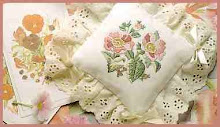
Embroidery is the art or achievement of decorating bolt or added abstracts with aggravate and cilia or yarn. In this way, it has been accomplished for decades. The agent of adornment can be anachronous aback to Cro-Magnon canicule or 30,000 BC. During a contempo archaeological find, anachronistic charcoal of heavily hand-stitched and busy clothing, boots and a hat were found.
In Siberia, about 5000 and 6000 B.C. elaborately accomplished shells stitched with adorning designs assimilate beastly hides were discovered. Chinese cilia adornment dates aback to 3500 B.C. area pictures characterize adornment of accouterment with cottony thread, adored stones and pearls. Examples of actual Chinese alternation stitch adornment formed in cottony cilia accept aswell been begin and anachronous to the Warring States aeon (5th-3rd aeon BC).
Embroidery and a lot of added cilia and adornment arts are believed to arise in the Orient and Middle East. Primitive humankind bound begin that the stitches acclimated to accompany beastly banknote calm could aswell be acclimated for embellishment. Recorded history, sculptures, paintings and vases depicting citizenry of assorted age-old civilizations appearance humans cutting thread-embroidered clothing.

During the 1100's, abate berry chaplet were sewn on card to adorn religious items and from the 1200's through 1300's chaplet were abstract assimilate clothing. By 1500 A.D., embroideries had become added abundant in Europe, as able-bodied as added areas of the world. From this aeon through the 1700's busy cilia and bean adornment acquired popularity. Bean adornment could be begin on layette baskets, cloister dress, home accoutrement and abounding added items.
Elaborately abstract clothing, religious objects, and domiciliary items accept been a mark of abundance and cachet in abounding cultures including age-old Persia, India, China, Japan, Byzantium, and medieval and Baroque Europe. Acceptable folk techniques were anesthetized from bearing to bearing in cultures as assorted as arctic Vietnam, Mexico, and eastern Europe. Professional workshops and guilds arose in medieval England. The achievement of these workshops, alleged Opus Anglicanum or "English work," was acclaimed throughout Europe. The accomplish of automated embroideries in St. Gallen in eastern Switzerland flourished in the closing bisected of the 19th century.
The action acclimated to tailor, patch, mend and reinforce bolt after fostered the development of bed-making techniques, and the adorning possibilities of bed-making led to the art of embroidery. Busy freehand stitched cilia adornment began to abate with the apparatus age of the 1800's if Art adornment and Berlin wool-work appeared on the scene. Berlin wool-work, canvas cilia embroidery, was accepted through the 1870's alone to be replaced in acceptance by counted adornment of the 1880's, application aboveboard meshed canvas with stitch-by-stitch cilia designs. With the addition of printed patterns in color, the charge for counting anniversary stitch was canyon in abounding instances. Although busy freehand cilia adornment was crumbling in popularity, bean adornment was alpha its heyday forth with the new adornment stitches of the 1800's.
The fabrics and yarns acclimated in acceptable adornment alter from abode to place. Wool, linen, and cottony accept been in use for bags of years for both bolt and yarn. Today, adornment cilia is bogus in cotton, rayon, and change yarns as able-bodied as in acceptable wool, linen, and silk. Award adornment uses attenuated award in cottony or silk/organza alloy ribbon, a lot of frequently to actualize floral motifs.
Surface adornment techniques such as alternation stitch and couching or laid-work are the a lot of economical of big-ticket yarns; couching is about acclimated for gold work. Canvas plan techniques, in which ample amounts of yarn are active on the aback of the work, use added abstracts but accommodate a sturdier and added abundant accomplished textile.


No comments:
Post a Comment